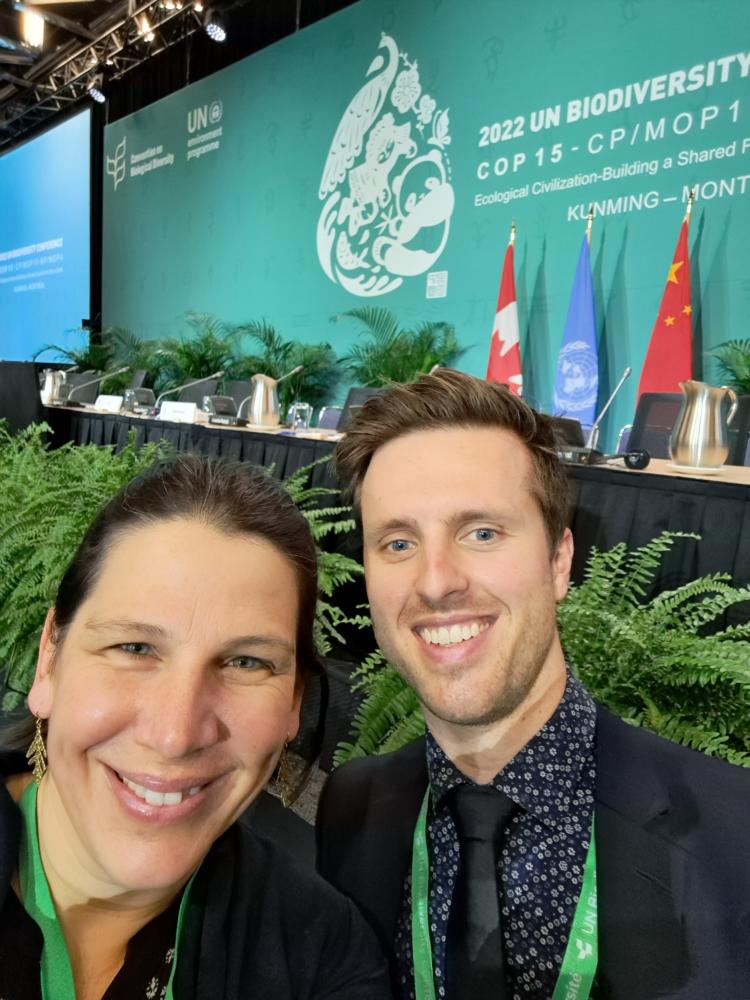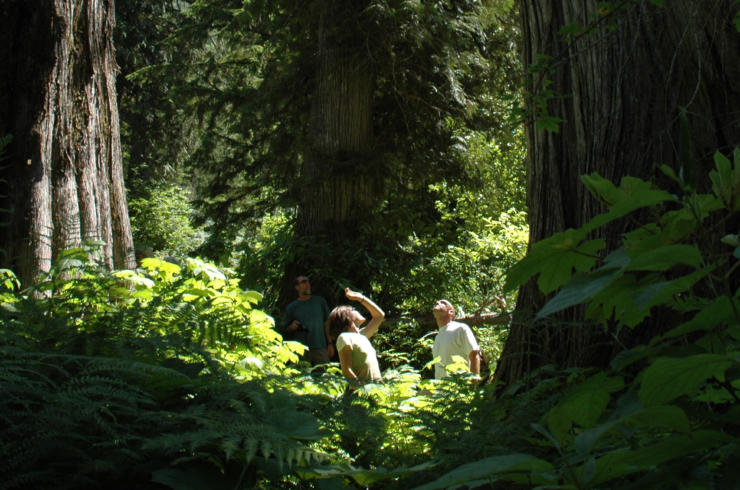In December, Montreal welcomed the world to COP15. The goal? To negotiate a new global biodiversity framework (GBF) ambitious enough to tackle the world’s growing biodiversity crisis. Wildsight’s team was on the ground to advocate for ambitious commitment, accountability, and action to protect nature.

COP15, also referred to as NatureCOP or CBD COP, is a conference for signatories to the UN’s Convention on Biological Diversity (CBD). COP, or Conference of the Parties, is more commonly recognized for the Climate COPs and more specifically, the Paris Climate Agreement, signed in Paris at COP21 in 2015. The Paris Climate Agreement was a game-changing global commitment to limit global warming to only 1.5-2.0 degrees Celsius above pre-industrial temperatures.
The goal at COP15 in Montreal was to achieve an agreement as ambitious as the Paris Climate Agreement but aimed at nature protection to stop and reverse accelerating global biodiversity loss.
The Kunming-Montreal Global Biodiversity Agreement was signed in the early hours of the last day of the conference, achieving what many feared would not come. Canada played a key leadership role in achieving the agreement, which outlines how the world will work together to halt and reverse biodiversity loss.
While Canada had already committed to protecting 30% of our lands and waters by 2030, a global commitment was needed to stem species loss and protect our natural life support systems. Major outcomes from COP15 included:
- The inclusion of a global commitment to protecting 30% of global lands and waters by 2030 under Target 3.
- Centering the critical role of Indigenous leadership in protecting nature. Previous global agreements did not include reference or recognition of the critical role Indigenous peoples have played – and continue to play – in protecting and stewarding our lands and waters.
- A commitment to restoring at least 30% of degraded land and ocean scapes by 2030 under Target 2.
Action Plan and Accountability for Nature Protection Needed
Global commitments play a key role in inspiring and driving action, but to ensure we achieve our commitments an action plan with accountability is critical. We eagerly await the development of Canada’s National Biodiversity Strategies and Action Plan (NBSAP) which will map out how we move forward to meeting our commitments under the Kunming-Montreal Global Biodiversity Framework.

One of the benefits of hosting COP15 was that our political leaders were inspired to celebrate nature and Canada’s incredible biodiversity and to demonstrate their commitment to protecting it. Many associated announcements came out throughout COP15, including significant investment to support Indigenous-led conservation and the establishment of a new national Guardians program. Two other announcements that thrilled us:
- Minister Steven Guilbeault’s proposal to develop a Canadian biodiversity accountability law that would make protecting nature a legal objective.
- British Columbia joined the global conservation movement, committing to protecting 30% of its lands and waters by 2030. As BC’s most biodiverse province, biodiversity protection here is critical.
Of course, nothing is perfect and there were many shortcomings in the agreement, like a failure to limit pesticide use, to require industrial reporting of harming biodiversity, and a failure to incorporate an accountability framework. The new Global Biodiversity Framework replaces CBD’s Strategic Plan for Biodiversity 2011-2020 and its Aichi Targets, which achieved little in halting and reversing the world’s biodiversity loss.
Despite this, there are many signs of hope and giant opportunities for Indigenous-led conservation across Canada. In the first few weeks of 2023, the Taku River Tlingit First Nation declared the T’aku Tlatsini Indigenous Protected and Conserved Area in north-western B.C., encompassing 60% of the Taku Watershed, and just yesterday, the B.C. government announced the Incomappleux Conservancy, protecting 58,000 hectares of irreplaceable and carbon-storing cedar hemlock forests of the Inland Temperate Rainforest. The Global Biodiversity Framework supports our collective efforts to protect global biodiversity – our job now is to make sure that commitment leads to action in halting and reversing the biodiversity crisis.









